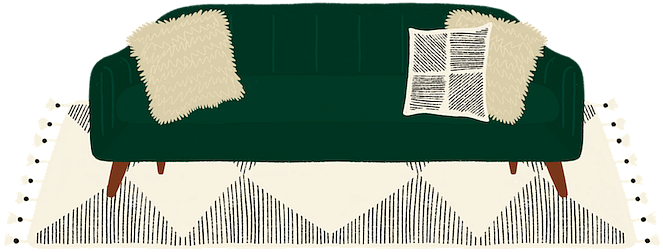
Ah, self-care routines.
Did the image of someone with a clay face mask on and cucumbers for eyes appear in your mind? I think of a woman with her hair wrapped in a purple towel and an annoying, blissful smile on her face. There’s also tranquil spa music playing in the background as she sips water infused with fruit, not a care in the world.
The American beauty industry tells us these things are the key to relaxation and “self-care”. If you can slip into your silk robe after a nightly lavender scented bubble bath you will be a more productive and happier human. But for someone with sensitive skin and a hatred of lavender, that routine just doesn’t do it for me. So what next?
Self-care has no strict definition.
But it can be best explained by the small daily habits one establishes to ensure their well-being. It is obtuse and also deeply personal. The reason face masks and fruit water have not cured the stress epidemic we are facing is because everyone needs to establish their own self-care routines.
Throughout my practice as a therapist, I have learned the importance of helping clients find the individual things that make them feel as though they are caring for themselves. I start the practice by encouraging them to integrate small moments of daily joy. For example, something as simple as having a short dance party in the living room, to larger things like getting a good night’s sleep. However, broadly speaking self-care should focus on two main areas; physical and psychological well-being.
For me, the bulk of my self-care is my morning routine. I try to start each morning by moving my body. My favorite way to do so is what I have affectionately coined “the waddle.” It’s a combo walk/run where I stop to pet every friendly dog whose owner will let me. This helps nurture both my physical and psychological well being. My body appreciates the movement, and my heart appreciates how many dogs wear sweaters in the wintertime! Nothing extravagant or costly, just simple joys.
To establish your own self-care routines, think about what you need for your body and brain to feel good. I always tell my clients they can start as small as eating a piece of chocolate. Give yourself permission to do things that feel restorative.
Start with these three tips.
- Movement. Find something that feels good for you in moving your body. I’m serious about the dance party! It has been scientifically proven that dancing helps reduce levels of the stress hormone, cortisol. It also increases the feel good chemical dopamine in our brains. Turn on some tunes, and bust a move in the name of self-care.
- Sleep. Much like our bodies need movement, they also need sleep. It is extremely important that we get a good night’s rest, every night. Sleep is not only enjoyable, but it enables our brains and bodies to recover.
- Mindfulness. The day-to-day can sometimes feel overwhelming. So, it is important that we take time every day for ourselves to be mindful of how we are feeling. A simple one minute pause once we notice we are stressed can help eliminate more negative feelings. A square breath can be helpful: breathe in for four seconds, hold for four, out for four, and hold for four. Taking that step back from our situation can ground us in our day and reduce the overwhelm.
In the end, self-care should be an independent exercise that looks different for everyone. Take these tips to start building your own self-care practice!
Becca specializes in adolescents, OCD, LGBTQ+ mental health, anxiety, and depression. To learn more about Becca, read her bio here.
Looking for a therapist or unsure where to begin? Get started on our booking page.





Leave a Reply